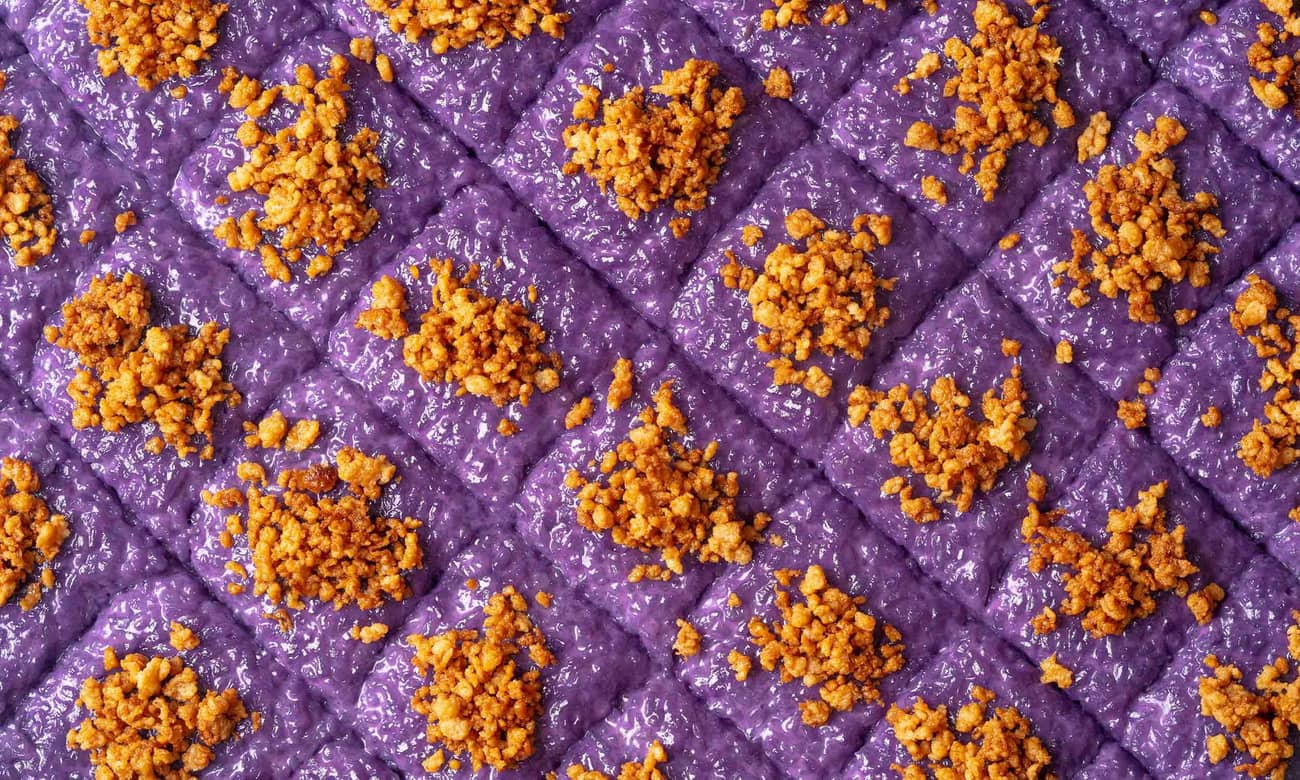
Give biko, the Filipino sticky rice cake made with brown sugar and coconut milk, a dose of sunshine with dayap and calamansi rinds.
Out of the entire kakanin (Filipino sticky rice cake) canon, we think biko is the best one. Its toasty color comes from brown sugar, which adds a sweet, caramel depth to the coconut-infused sticky rice.
Crispy latik, or caramelized coconut curds, dot the surface of each piece of biko, adding a delightful textural crunch.

Latik can be one of two things, depending on where you're from. Visayan latik is a syrupy coconut caramel made by reducing coconut milk with brown sugar. Tagalog latik is toasted coconut milk curds left from boiled coconut cream, often sprinkled over snacks like suman, biko, sapin-sapin, and maja blanca.
Some variations of biko might include ginger, anise, or pandan. This recipe uses citrus rinds, which adds a subtle tartness that cuts through the sweetness, like sunshine peeking through coconut palm leaves.
We use a combination of dayap (key lime) and calamansi, but you can go full calamansi all the way. Take note that you're using the rinds, not the juice! Toss those squeezed-out calamansi into sweet coconut milk to infuse just the right amount of acidity.



Biko doesn't discriminate on occasions. You'll find it gracing birthday tables, fiestas, and holiday get-togethers. And because biko is meant to be shared, this recipe makes enough for two households. Break out the bilao and banana leaves for this one!
Cook rice: Combine washed glutinous rice and water in a large pot over medium-high heat. Once the liquid comes to a boil, reduce heat to medium-low, cover pot, and cook rice about ¾ of the way through, about 7–8 minutes. You can also do this in the rice cooker.
Prepare coconut milk mixture: Combine coconut milk, brown sugar, and salt in a large wok or skillet (preferably nonstick) over medium heat. Cook mixture, stirring constantly to avoid scorching the bottom, until sugar is dissolved. Add spent citrus rinds (we used 1 dayap and 2 calamansi) into the liquid. Continue cooking and stirring until mixture has darkened in color and thickened to an almost paint-like consistency, about 10 minutes. Remove citrus rinds.
Finish rice: Add par-cooked glutinous rice to the pan. Mix grains into the coconut milk mixture and continue cooking, stirring constantly, about 10–15 minutes. This allows the rice to absorb the coconut milk while cooking off excess moisture, creating a chewy texture. If you’re using a nonstick pan, you’ll see the rice slide and move around as one whole mass; this is a good sign that means the grains have absorbed most of the moisture.
Serve: Transfer biko from the pan and into a bilao lined with banana leaves. Allow to cool then slice biko into diamonds, finishing with a small topping of latik at the center of each piece.
